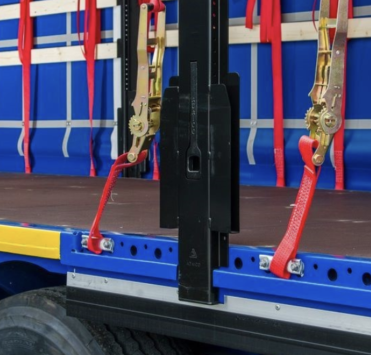Transport of lithium batteries: basic rules and requirements

The State Customs Service of Ukraine has clarified which batteries can be imported into the country duty-free. The new rules, which took effect after the adoption of laws No. 3854-IX and No. 3853-IX, exempt energy equipment from import duties and VAT.
Goods classified under code 8507 60 00 00 of the Ukrainian Classification of Foreign Economic Activity (UKEED) are exempt from import duty and VAT. Exceptions include energy storage systems with a capacity of less than 300 W for AC and/or DC and individual lithium-ion cells with a capacity of less than 200 Ah.
Thus, the following devices qualify for preferential import:
- Portable chargers with a capacity of 300 W and more: Batteries with capacities such as 128 W or 200 W will still incur duties.
- Power banks with a capacity of 300 W and more: Devices with this capacity automatically fall under the new laws, and customs duties are not levied on them.
- Lithium-ion cells with a capacity greater than 200 Ah: If a battery consists of one or more electrochemical cells connected in series (so-called "battery packs") and has a capacity exceeding 200 Ah, it is also exempt from taxation.
These changes open new opportunities for importers dealing with energy equipment, allowing them to reduce costs associated with importing batteries.
Features of Transporting Lithium Batteries from Europe and China
The transportation of lithium batteries has become a significant topic in international logistics due to the rapid increase in demand for portable devices and other technologies that use this type of battery. Lithium batteries are classified as hazardous goods, and their transportation requires adherence to strict norms and regulations.
Threats Posed by Lithium Batteries
Lithium batteries present significant risks. Here are a few major hazards:
- Fire Risk: Lithium batteries can catch fire if damaged or short-circuited. This occurs due to the high chemical activity of lithium and heat generation during the reaction.
- Explosiveness: When overheated or damaged, batteries can not only catch fire but also explode, posing a threat to those nearby.
- Toxic Substances: Damaged batteries can release toxic gases and liquids harmful to human health and the environment.
- Improper Disposal: Lithium batteries require special disposal, as improper destruction can lead to environmental pollution and dangerous situations.
- Transportation Challenges: Lithium batteries are subject to strict regulations during transport, necessitating particular attention to packaging and labeling.
Classification and Legislation
Lithium batteries are classified as hazardous materials according to international standards. This is due to the risk of fire and explosion, making their transportation especially sensitive. The main documents regulating the transportation of such goods are:
- IMDG Code (International Maritime Dangerous Goods Code): Governs maritime transport.
- IATA DGR (Dangerous Goods Regulations): Pertains to air transport.
- ADR (European Agreement concerning the International Carriage of Dangerous Goods by Road): Regulates road transport.
Every transport company is required to comply with these regulations, including special packaging and labeling of batteries to minimize risks.
Packaging and Labeling
Proper packaging and labeling of lithium batteries are essential for safe transport. They should be placed in sturdy containers that can withstand mechanical damage. The packaging must prevent short circuits, and the batteries themselves should have clear labeling indicating their hazardous nature, including symbols and inscriptions that comply with international requirements.
Additionally, appropriate documentation confirming compliance with safety requirements is necessary. Improper packaging can lead to fines and serious incidents.
Comparison of Road and Container Transport
Road Transport:
- Advantages:
- Speed of Delivery: Ideal for short-term shipments and small batches, allowing "door-to-door" delivery.
- Route Flexibility: Ability to change routes based on customer needs and road conditions.
- Storage Cost Savings: Minimizes expenses on temporary storage of goods.
- Disadvantages:
- Susceptibility to Delays: Dependence on weather conditions, road conditions, and border congestion can lead to delivery delays.
- Increased Safety Requirements: Compliance with strict regulations can raise transportation costs.
Container Transport:
- Advantages:
- Cost-Effectiveness for Large Volumes: More economical for bulk shipments, as delivery costs decrease with increased cargo volume.
- High Level of Security: Containers protect cargo from external impacts and provide reliable storage.
- Lower Risk of Damage: Standardized containers facilitate safer transport.
- Disadvantages:
- Longer Delivery Times: Sea transport generally takes longer than road transport.
- Need for Additional Logistics: Time and costs for transport to/from ports must be considered.
- Customs Complexities: Customs procedures can be more complicated, especially when crossing borders with different regulations.
Transporting lithium batteries from Europe and China requires a careful approach to comply with all safety regulations and norms. Both delivery methods—road and container—have their advantages and disadvantages. The choice between them depends on specific needs, cargo volume, and budget.
For successful and safe transportation of lithium batteries, trust this task to logistics professionals. Save Pro Solutions has experience in transporting hazardous goods and is ready to ensure the reliable delivery of your batteries to any corner of the world.









